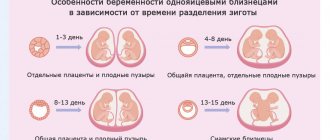The term “diarrhea” was inherited from the ancient Aesculapians and is translated from Greek as “expiring.” For more than a thousand years in a row, doctors have used this word to describe frequent bowel movements, in which the stool has a liquid consistency. Unfortunately, not a single person on earth is immune from diarrhea. And pregnant women in this “rating” are no exception, whether they are 5 weeks pregnant or 30.
Diarrhea during pregnancy is not a disease, but only a signal of problems with the expectant mother’s digestive system. Diarrhea at 40 weeks of pregnancy is considered absolutely normal: loose and frequent stools in a pregnant woman are associated with hormonal changes and are a harbinger of the long-awaited birth.
What are the causes of diarrhea? Is it an independent disease or just a symptom of the disease? Is diarrhea dangerous during pregnancy? What can be taken without endangering the health of the unborn baby? Is there a universal remedy for diarrhea? Many questions arise about this both in the doctor’s office and on forums on social networks. About everything in detail - in this article.
On average, food passes through the digestive tract in 24 to 72 hours. During this period, nutrients and water are absorbed into the blood. With diarrhea, the process accelerates significantly and most of the liquid and incompletely digested food passes through “transit” and is eliminated from the body. This is manifested by frequent bowel movements and liquid stool.
Did you know that...
Over the course of a person's lifetime, the average person produces 5 tons of excrement?
Causes of diarrhea in pregnant women
- Intestinal infections: viral, parasitic and bacterial. The causative agents of such infections most often enter the body through poor-quality food or water, as well as due to insufficient adherence to personal hygiene rules. It should be remembered that a decrease in the protective functions of the immune system during pregnancy makes the woman’s body especially sensitive to infection.
- Diseases of the digestive system: pancreatitis, gastritis, enteritis, peptic ulcer, hepatitis, colitis, etc. As a rule, a pregnant woman is well aware of the presence of a chronic disease, and therefore diarrhea caused by this reason is not unexpected.
- Allergic reaction to food or medicine. In this case, diarrhea is accompanied by itching, redness and conjunctivitis.
- Acute poisoning with various chemical compounds.
- Lack of certain vitamins (B2, PP, K).
- Nutritional features - the presence in the diet of a large amount of sweet carbonated drinks, coarse plant foods, hot sauces and seasonings, as well as the consumption of new food products by a pregnant woman. Poor diet can also cause diarrhea during pregnancy.
- Stress – increased frequency of bowel movements occurs against the background of any unrest.
- Toxicosis is a condition accompanied by various disturbances in the gastrointestinal tract.
Digestive diseases
What are the dangers of diarrhea during pregnancy?
- Loss of fluid, changes in water-salt balance threaten to disrupt the functioning of all systems and organs of the expectant mother, as well as changes in the composition and quantity of amniotic fluid. Dehydration can have a detrimental effect on pregnancy.
- Increased intestinal motility is observed during diarrhea and can cause a reflex contraction of the uterus, which can lead to the threat of miscarriage or the onset of premature birth.
- Diarrhea during pregnancy can lead to malnutrition and lack of essential elements, which poses a danger to the expectant mother and baby.
What should an expectant mother be wary of?
The second trimester is characterized by a large amount of discharge. Normally, they have a light white or yellowish tint, a uniform consistency, and no odor. Discharge becomes more abundant due to the fact that it is more difficult for the body to maintain normal microflora, compensatory mechanisms are launched.
However, the appearance of the discharge described below is not typical for a normal pregnancy:
- Brown. There is a risk of late miscarriage, premature birth and problems with the placenta.
- Greenish, gray. Indicate infectious processes of a purulent nature.
- White curdled ones. The microflora is disrupted and, as a result, thrush occurs.
If any unusual discharge occurs, you should consult a doctor.
When diarrhea is not dangerous
If diarrhea occurs during pregnancy, a woman should understand the difference between an emergency condition that requires emergency medical intervention and a minor ailment that can be successfully treated at home.
For example, after eating a suspicious or unfamiliar product, the expectant mother felt some discomfort in the stomach, accompanied by diarrhea without mucus or blood. Most likely, this is mild food poisoning, which will pass without any consequences for the body within one to two days.
The color of your feces depends primarily on the food you eat. Green diarrhea during pregnancy is caused by the digestive contents shifting too quickly in the digestive system so that the bile produced during the digestion process is unable to change color from greenish to brown.
Stages of fetal development
The calendar gestation period is just over 9 months. However, there are 28 days in an obstetric month, so the obstetric gestational age is 10 months or 40 weeks.
The 2nd trimester of pregnancy lasts from 13 to 26-27 weeks of pregnancy. By the time it begins, the unborn baby’s main organs have already been formed, and their weight and height are rapidly increasing. Let's look at how intrauterine development of the fetus occurs week by week in the 2nd trimester.
Week 13
At this stage, cartilage tissue is formed, which protects internal organs from adverse effects. The digestive system is actively developing. Peristalsis occurs in the intestines - a wave-like contraction of the muscle layer of the walls of the organ. A fold of the laryngeal mucosa appears, consisting of the strip ligament and vocal muscle.
The tooth buds separate from the epithelial plate and begin to develop and mineralize. First, dentin is formed - the hard and basic part of the tooth. After this, enamel is formed - the protective shell of the crown. By the fifth month of gestation, the formation of the enamel of the front teeth is completed, and by the end of the second trimester - the chewing teeth.
Intensive development of the placenta is observed: it produces estrogen and progesterone, which support the normal course of pregnancy.
Week 14
Lanugo, a thin layer of hair that performs a protective function, is formed on the fetal body. The body of the unborn child synthesizes a gray waxy substance that covers the skin. This substance has antibacterial and antifungal properties. Thanks to lanugo, lubricant lingers on the skin and reliably protects it from pathogenic organisms and the effects of amniotic fluid.
The formation of protective hair is completed by the 28th week of pregnancy. The hairs disappear by the end of the third trimester or a few weeks after giving birth.
At the same time, active development of muscle tissue occurs. The fetus is able to move its head, mouth, and limbs. By the end of the 14th week, its size is about 10 cm and its weight is 40-43 g.
Week 15
The musculoskeletal system develops, the density of cartilage and bone tissue increases. The gallbladder begins to fulfill its functions: to accumulate and remove bile. The size of the unborn baby increases by 1-2 cm, and weight - up to 70 g.
Facial muscles and skin are well developed, salivary and sweat glands are formed. The heart works in active mode and pumps about 500 ml of blood per day.
Week 16
The formation of the placenta, which provides the unborn baby with oxygen, nutrients, hormones, vitamins, and microelements, is completely completed. The brain, spinal cord and urinary system are actively developing.
The formation of nail folds and the appearance of a primary (false) nail plate occur. Full nails will form only by the end of the third trimester of pregnancy.
Week 17
The fruit is proportionally complex, its size is 13 cm, and its weight is 150 g. The formation of cellular immunity begins. Single lymphoid nodules appear that prevent foreign particles, foreign proteins and bacteria from entering the blood. Adipose tissue is formed, which protects the body from heat loss and forms an energy depot.
Week 18
The temporal lobes of the cerebral hemispheres, in which the auditory centers are located, are actively developing. Bone density increases. The future baby's need for iron increases significantly.
Week 19
Brain neurons are formed that are responsible for processing and transmitting information. The skin is covered with a viscous substance - a protective lubricant. The left or right hand begins to dominate. Meconium, the first feces, forms and accumulates in the intestines.
The fetus learns to swallow amniotic fluid, which contains oxygen, salts, fats, glucose, and hormones. The digestive tract is “trained” to digest nutrients. The unnecessary part of the fluid is excreted through the urinary tract and returns to the amnion.
20-21 weeks
The skin becomes denser, bones and muscles are strengthened, the fetus is actively growing and gaining weight. He regularly uses amniotic fluid for food and drink. The intestines are able to absorb glucose and other nutrients.
The bone marrow begins to perform a hematopoietic function: it creates new blood cells to replace dying ones. Additional hematopoietic organs are the spleen and liver.
22-23 weeks
The reproductive system develops: the genitals move down from the abdominal cavity. The fetus begins to perceive sound signals well. The lungs develop: they produce special substances that prevent the walls of the alveoli from sticking together.
24-25 weeks
The endocrine system is improved. The adrenal glands synthesize glucocorticoids, which are involved in the process of hematopoiesis, affect metabolism, and interact with other hormones. The pituitary gland produces the hormone corticotropin, which regulates the functioning of the adrenal glands.
26-27 weeks
By the end of the 2nd trimester, the size of the fetus is about 33 cm, weight - 900 g. He can move, smile, suck his finger while sleeping. The unborn baby's eyelids open, and the sensitivity of the organs of vision to light increases. Thus, the fetus gradually turns into an active little person.
Diarrhea in the first trimester of pregnancy
Typically, diarrhea is a mild condition that does not require major intervention. However, if diarrhea is associated with abdominal pain or vaginal bleeding in the early weeks of pregnancy, it may be due to a miscarriage and requires immediate medical attention.
To assess the risks, you should pay special attention to the presence of blood, mucus or pus in the stool. Regardless of the stage of pregnancy, this may be a signal of the development of a serious infection, which can lead to termination of pregnancy.
Diagnostic features
When diagnosing the disease that caused diarrhea, it is important to exclude surgical, urological and obstetric pathologies. To do this, an examination is required; if necessary, the doctor prescribes additional examination. Diarrhea in the early stages can be a manifestation of ectopic pregnancy, appendicitis, urinary tract infections, pyelonephritis, inflammatory bowel diseases, acute pancreatitis. That is why it is important to promptly establish the cause of intestinal dysfunction and select adequate therapy. Monitoring (monitoring) of the condition of the fetus at 37, 38 and 39 weeks of pregnancy is also mandatory.
Up to contents
Diet and drinking regimen in pregnant women with diarrhea
Because pregnant women are more susceptible to infections resulting from a weakened immune system, it is wise to follow a healthy diet during pregnancy and avoid potentially harmful foods. The main rule for diarrhea during pregnancy is to maintain adequate hydration.
A pregnant woman with diarrhea loses not only a large amount of water, but also electrolytes. Systematically increasing their levels is crucial to minimize the risk of dehydration. A dehydrated body is definitely more susceptible to kidney problems, acidosis, or general body toxicity.
Drinking regime during pregnancy
A woman can try to alleviate her condition in the following ways:
- Drink more liquid: unsweetened tea, herbal infusions, clean water.
- Regidron, Laktosol and other solutions that restore the water-salt balance are excellent at helping to cope with dehydration.
- Maintaining a gentle diet: crackers, tea, slimy porridge, applesauce, low-fat cottage cheese, kefir, fermented baked milk. Eliminate fatty, spicy and salty foods, coffee, milk, fresh vegetables, butter from the diet.
You should return to a normal diet after diarrhea stops gradually, over several days, by including in your diet foods that have a strengthening effect: rice, bananas, apples, carrots, etc.
Diarrhea during pregnancy - treatment with medications
Pregnant women should not take any antidiarrheal medications without first consulting a specialist.
One of the available ways to combat this disease is charcoal, which facilitates the binding of bacteria and toxins.
For more severe conditions, the gynecologist may recommend taking the drug Smecta, which is safe for pregnant women and young children.
Before trying an exotic fruit at the market or snacking on aromatic shawarma on the way, expectant mothers should think about the fact that now they are responsible not only for themselves, but also for the health of their baby.
MAKE AN APPOINTMENT
[contact-form-7 id=”296" title=”Untitled”]
Abortion and contraception clinic in St. Petersburg - department of the medical gynecological association "Diana"
Make an appointment, tests or ultrasound via the contact form or by calling +8 (812) 62-962-77. We work seven days a week from 09:00 to 21:00.
We are located in the Krasnogvardeisky district, next to the Novocherkasskaya, Ploshchad Alexander Nevsky and Ladozhskaya metro stations.
The cost of a medical abortion in our clinic is 3,300 rubles. The price includes all pills, an examination by a gynecologist and an ultrasound to determine the timing of pregnancy.
Baby
The 17th week of pregnancy is marked for the baby by an active increase in the mass of his muscles, their gradual strengthening, which allows him to move in the tummy more intensely and variedly. Quite frequent movements of the limbs help the child train muscles and also develop the joints of the knees and elbows. At this stage, the hands are still clenched into fists, rarely unclenched, and only for the purpose of grasping the umbilical cord or sucking a finger. Until 17 weeks, the fetal head was practically motionless, dropped quite low, and the chin was tightly attached to the chest. Strengthening the muscles of the back and cervical region at this stage allows the child to raise his head to an almost vertical position.
Internal organs continue to develop and improve. Their structure only becomes more complex, which contributes to the expansion of functionality. Their preparation will allow you to begin normal, full functioning after the baby is born.
It is important to note the changes that occur in the vascular system and heart of the fetus. The nerve plexuses that surround the heart give rise to the formation of the conduction system; Its uniqueness lies in the fact that the heart does not need signals from the outside to work. All human internal organs obey the central nervous system. The brain sends certain instructions according to which each of the organs works. The heart, in turn, functions with the help of command signals that arise within itself and cause it to contract. The exclusively autonomous mode of operation of the heart allows it to be independent of the level of central nervous system activity throughout a person’s life.
The 17th week of pregnancy is also characterized by the formation of the respiratory system, namely, the strengthening of the lung muscles. Active respiratory contractions resemble inhalation and exhalation and thereby strengthen the muscles of the chest. The formation of the alveolar apparatus of the lungs also occurs. Alveoli are presented in the human body in the form of small bubbles, which are located on the surface of the respiratory apparatus and are responsible for gas exchange. Each breath helps saturate the blood with oxygen. At the 17th week, the alveoli are in a compressed state, but immediately after birth, with the first breath, they will straighten out and be ready for normal functioning.
The weight of the fetus at this stage is about 150 g, and the body length is 12-13 cm.










